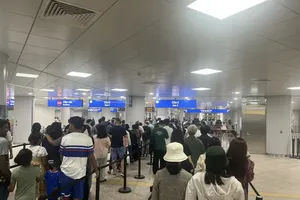The People’s Committee in Ho Chi Minh City and United Nations Development Program (UNDP) yesterday held a seminar on Multidimensional Poverty Index (MPI).
The traditional income measures of poverty could not evaluate the povety rate in the big city like Ho Chi Minh City. The UNDP has been introduced a new way to calculate the poverty rate, which is called Multidimensional Poverty Index.
The index identifies deprivations across the same three dimensions as the HDI and shows the number of people who are multi-dimensionally poor. It can be deconstructed by region, ethnicity and other groupings as well as by dimension, making it an apt tool for policymakers.
The poverty line is defined not only by income but numerous variables, including income, assets, education, health and access to social services.
Almost around 2.4 percent of the city’s population covered by the income measures of poverty which defined income of below VND16 million (US$ 749) per head per year. But people in this group cannot assess social services. Based on the new global poverty measures, the will have over 346,000 poor households with 1.2 million residents, accounting for 16.5 percent of the city’s population meanwhile as per the second way.
Nguyen Van Xe, deputy head of the municipal Department of Labor, Invalids and Social Affairs said that the new measures of poverty line will include education and training, healthcare, living quality, information accessing, insurance and social aids.
The new measures of poverty has been carried out in HCMC in the period 2012-2016 funded US$2.2 million by UNDP. The poverty reduction will be implemented in HCMC since 2016 and later implemented nationwide the country.
The Multidimensional Poverty Index (MPI), published for the first time in the 2010 Report, complements monetary measures of poverty by considering overlapping deprivations suffered by people at the same time.
Almost 1.5 billion people in the 91 countries covered by the MPI—more than a third of their population — live in multidimensional poverty — that is, with at least 33 percent of the indicators reflecting acute deprivation in health, education and standard of living.
This exceeds the estimated 1.2 billion people in those countries who live on $1.25 a day or less. And close to 800 million people are vulnerable to fall into poverty if setbacks occur – financial, natural or otherwise.













)










